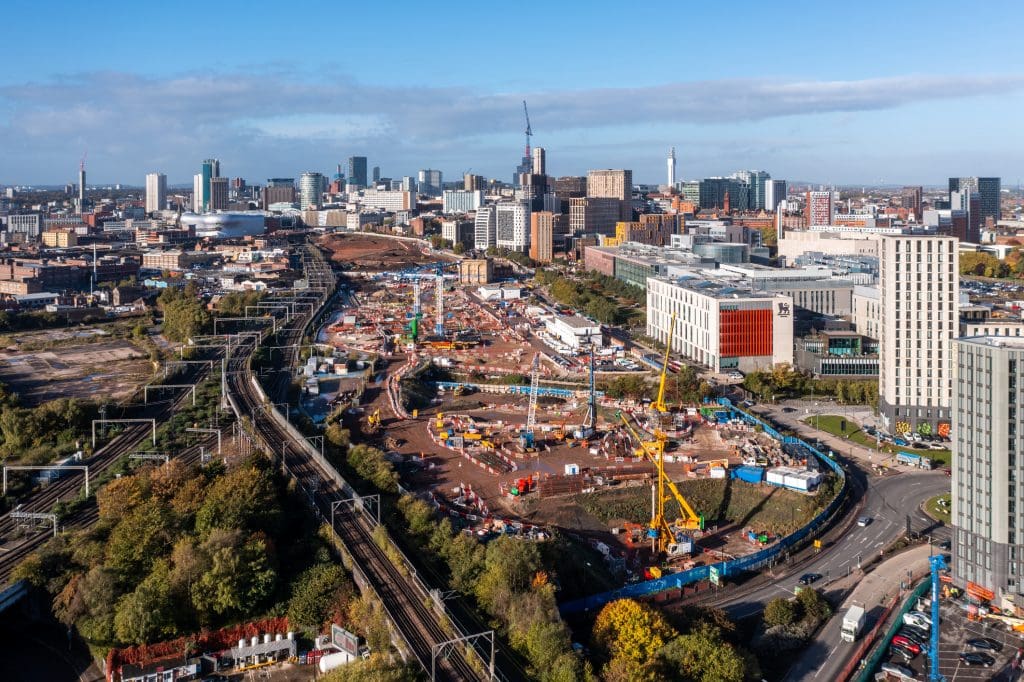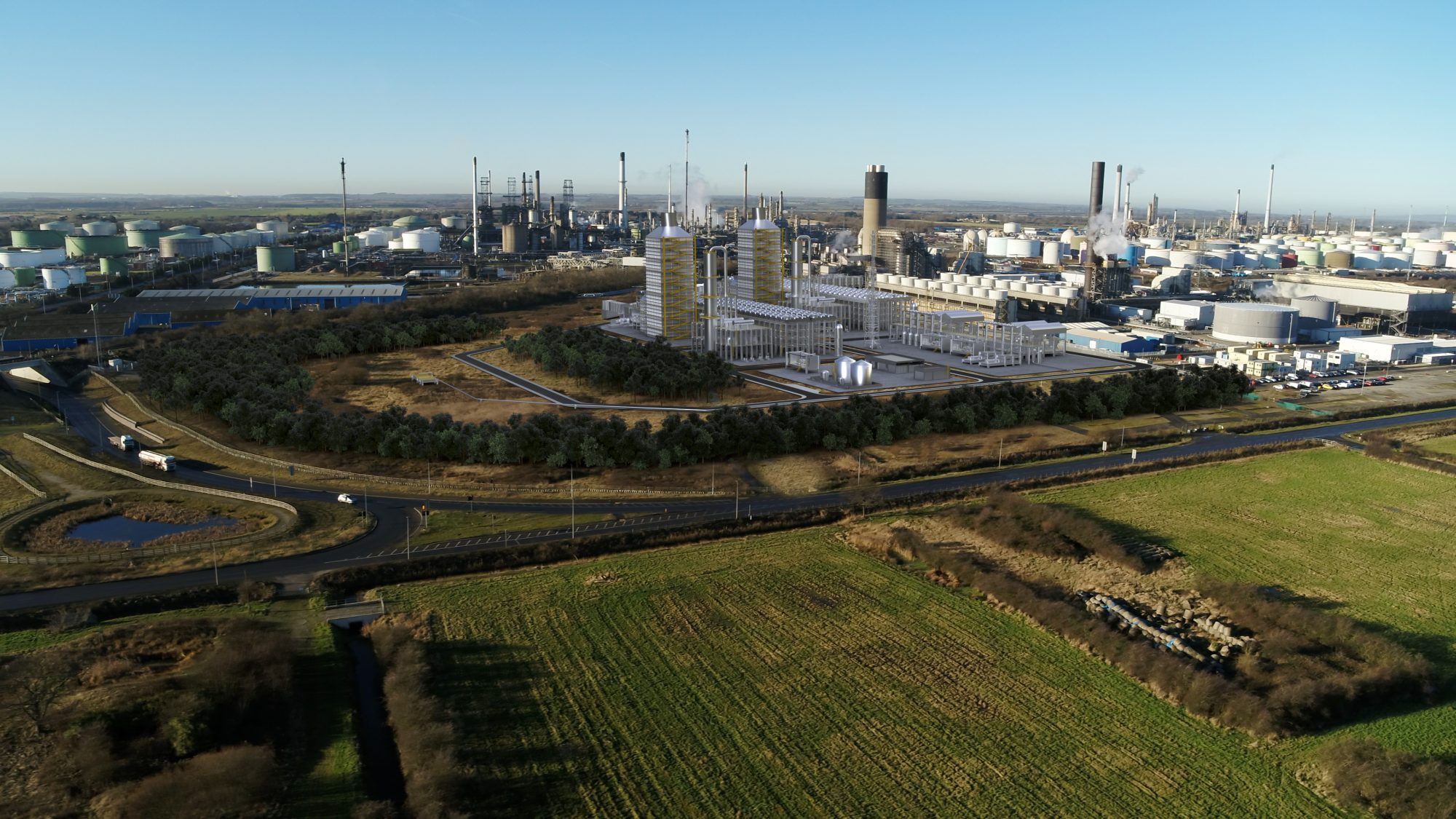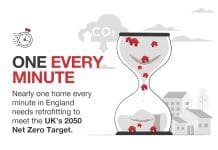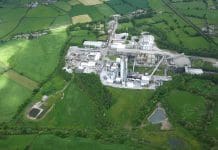Professor Adam Boddison OBE, chief executive of the Association for Project Management (APM), examines three megaprojects – London 2012, HS2 and Zero Carbon Humber – that provide successful template for built environment professionals on the road to net zero
“Those who cannot remember the past are condemned to repeat it.”
Over a century has passed since American-Spanish philosopher George Santayana etched this aphorism into history and countless pocket-sized books of wisdom. In fact, when he reached this conclusion in 1905 – before the conception of cornflakes, instant coffee and carbon neutrality – global CO2 levels were 297.6 parts per million (ppm).
Historically, this had barely changed. Prior to the industrial revolution, CO2 levels were around 280ppm consistently for 6,000 years of human civilisation.
From a more sobering, wide-lens perspective, CO2 levels today are around 420ppm, various measures show. They have been pushed into territory not seen for millions of years.
The 21st century faces the twin tasks of halting, and potentially reversing, rising CO2 levels and their irrefutable effects on climate change, and adapting our infrastructure and economies to evolving landscapes.
This is where project management uniquely steps in. The Association for Project Management (APM) has published new research, Are We Ready for Net Zero in Project Management? The Challenges and Strategies for Project Professionals in the Delivery of UK Major Projects looking into UK net zero readiness.
It also examines the essential, innovative and easily overlooked role that project professionals will play in the board room and on the frontline in its planning, execution and delivery.
A golden past: London 2012’s record-breaking greener games
Despite preceding the 2050 net zero legislation by seven years, London 2012 was ahead of the game.
Although it continued the Olympic trend of budget overspends (£8.4bn was a 101% cost overrun), the first Games our capital held since the miraculous 1948 post-war edition focused on climate mitigation through innovative design.
The megaproject marked a significant advancement in incorporating environmental considerations into major project planning and execution. Strategies included:
- Pioneering a carbon assessment and management system.
- Encouraging innovative low-carbon technologies and solutions.
- Guidelines and policy for sustainable sourcing.
Project managers distinguished London 2012 with a comprehensive carbon footprint analysis that encompassed embodied emissions (ie venue and infrastructure construction) and operational emissions (ie venue use and transport).
The post-event review of actual measured emissions found a decrease of 377,000 metric tonnes of CO2 equivalents (ktCO2e) from the estimated baseline – an impressive 17% reduction.

Presently on track: Why HS2 Phase 1 is a landmark megaproject
With the transport sector accounting for around one-third of UK carbon emissions, HS2 is a highly significant UK project.
All controversy aside, HS2 has undergone a meticulous carbon footprint assessment, covering emissions expected during project execution and 120 years of operation.
Its target is a 50% reduction in construction-related emissions by 2030, with climate neutrality in Phase 1 (London to Birmingham) operation to be achieved in 2035.
Notably, these methodologies have matured from London 2012, with carbon reporting at its heart. Strategies include:
- Robust carbon management systems: HS2 became the first UK transport client to implement the PAS 2080 standard for carbon management and reporting.
- Learning, innovation and knowledge sharing: For example, building accurate carbon databases for construction projects.
- Use of contractual carbon requirements: Carbon reduction targets are embedded in supply chain contracts.
- Carbon literacy training: Skills development with the Carbon Literacy Project.

The future: Zero Carbon Humber paving the way
With traditional carbon-intensive industries such as steel, concrete and chemical production, the east coast industrial clusters are the beating heart of the UK’s industry.
But they are responsible for around 38% of total UK industrial sector emissions.
The complex task of transforming these clusters into carbon-neutral entities exemplifies the ambitious 2050 net zero transition.
However, Zero Carbon Humber illustrates a pioneering adaptation effort in tackling decarbonisation with cutting-edge technologies, delivering two carbon capture projects:
VPI’s Immingham plant and the Phillips 66 Humber Refinery as part of the Viking CCS Cluster, which aims to capture up to 10m tonnes of CO2 per year by 2030.
Budgets and legislation are two significant overarching challenges. Project managers must also consider structural complexity (technology and components integration), technical novelty and uncertainty (CCS is unchartered territory), dynamic complexity (engineering, R&D, approvals, funding and regulatory frameworks), as well as overlapping timelines and socio-political complexity.
As Zero Carbon Humber evolves from infancy to maturity, its programmes will offer valuable lessons and insights for addressing decarbonisation at scale.
Carbon copies
Since the industrial revolution, humans have generated an estimated 1.5 trillion tonnes of CO2 pollution, much of which will continue to warm the atmosphere for thousands of years.
A philosophical and practical reflection of the past, present and future is just one small chunk of the work therefore needed to fuel a sustainability revolution.
We have the case studies, data and blueprints to create a carbon neutral future. The project profession stands ready to apply them wholeheartedly. We cannot fail the future.
Download the full report.














